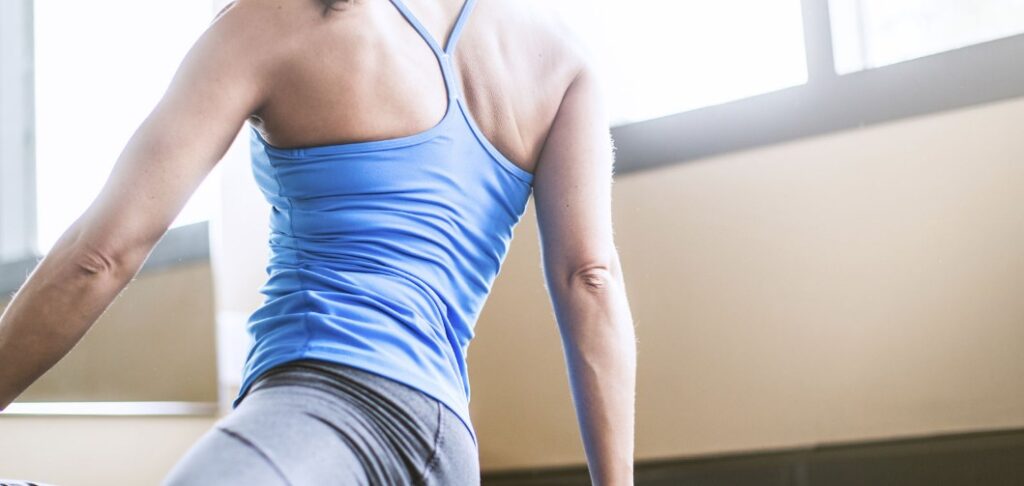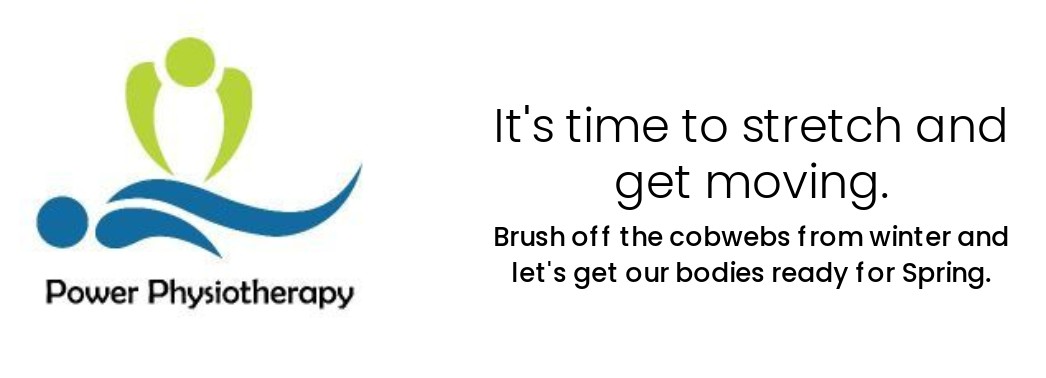There are less than 2 weeks left of winter, so let the Power Physiotherapy team help you get back on track and moving well. Sandra, Stefano and Darren can help put that ‘Spring’ back in your step starting with Part 1 of your Wellness Programme.
Top 5 tips you always wanted to know about Stretching
1. What type of stretching should I do, static or dynamic?
2. When should I stretch?
3. How long do I hold the stretch for?
4. How often should I stretch?
5. What stretches can I do for my upper and lower body?

But first: why should I even bother to stretch?
- Improve your joint range of movement & muscle flexibility.
- It may improve your performance in sport or exercise.
- Assist with post exercise soreness.
- Lower your risk of injury.

Static versus Dynamic stretching
Static stretches are those in which you stand, sit or lie still and hold a single position for period of time.
Dynamic stretches are movement based type of stretches without holding a position (such as swinging your leg or circling your arms).
Both types of stretches help improve movement, however because dynamic stretches involve movement rather than holds, they may also assist with functional and sport specific skills and warmups.
Static versus dynamic stretching depends on what you need to achieve however it’s a good idea to perform both as they benefit in different ways.
When should I stretch?
There’s no set rule as to the best time to stretch, (morning, night, before exercise, after exercise), however it’s always safer to stretch when your muscles are warm such as after exercise.
However if you prefer to stretch before starting your exercise programme or sport, make sure that you go for a brisk walk or 5 min jog until you break into a light sweat. Then your muscles are warm enough to begin your stretching regime.
Static stretching of cold muscles can potentially cause an injury.
How long do I hold the stretch for?
There’s no set rule on how long to hold a stretch. However consider what works for you, how quickly your body responds to a stretch as well as the demands of the activity of sport that you are about to participate in.
If you have some pain issues starting with shorter hold times, then gradually increasing as pain allows may work really well.
Remember don’t rush a stretch, take your time and focus more on a pulling/lengthening sensation rather than pain. If pain is present only stretch to a mild discomfort.

How often should I stretch?
Daily stretching will deliver the greatest gains, but typically, you can expect lasting improvement in flexibility if you stretch at least two or three times a week.
Remember more is not always better so stretch with caution because it can be easy to also over do it.
Click on the links below to find your sample stretching programes :
Neck, shoulders & trunk stretching programe
Lower body stretching programe
Click HERE to check out the Power Physio Stretching Video:****Note: These stretching programmes are of a general nature: You should always seek advice before starting any exercise or stretching regime****




